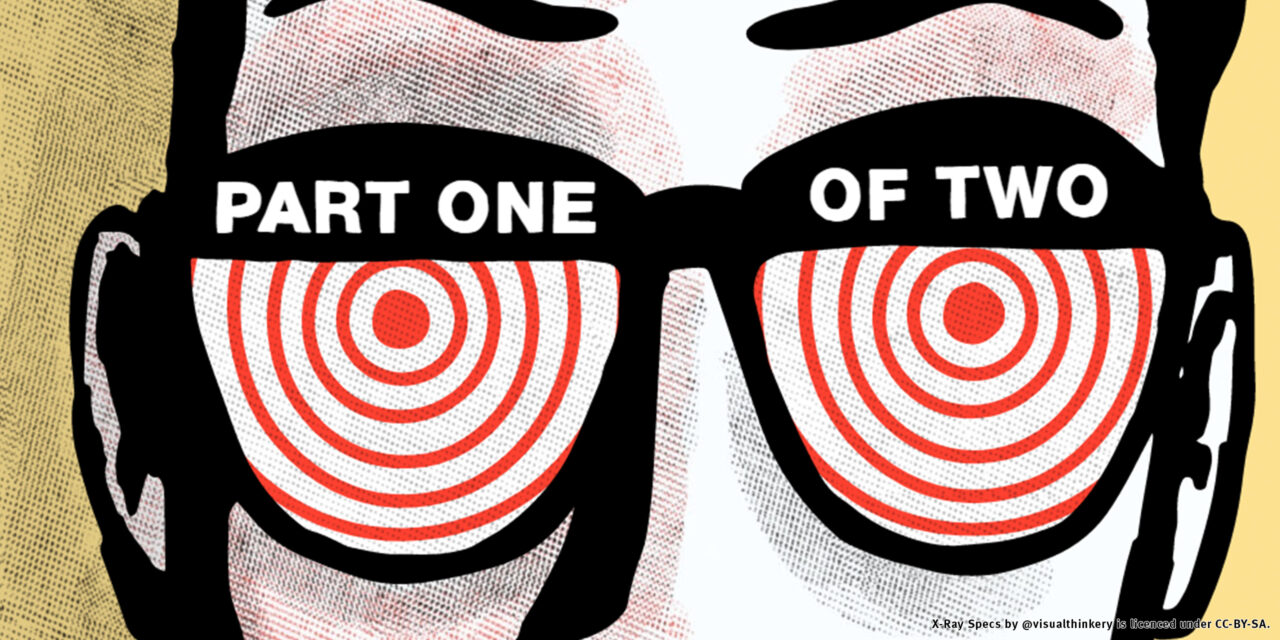What a great book! I have only about two years of experience in education and everything I’ve done to this point as been instinct or relying on coworkers for assistance. I’ve developed and delivered several courses for online (and more for face-to-face) but had never considered the history of educational technology. As with most educators (I assume), this was from lack of time rather than interest. This book is providing so many insights about my own thoughts and has offered a window into what was going on in educational technology when I was a child, watching the internet grow and change. I learned to write HTML in my early teens (around ‘96–’97) and most of it was through online resources or studying the code generated through tools I had at my disposal: Hot Dog Professional and then Dreamweaver (that WYSIWYG function was a disaster). I was so excited by the internet’s potential, but never really gave any thought to the educational side of internet technology.
I enjoyed Weller’s accounts of the shifting of perceptions within educational technology and how ideas moved from tool to pedagogy. I take this so much for granted now, since the tools provided so many affordances and I can focus primarily on my intent without wondering if the tool can accomplish it. Watching how these tools and ideas were conceptualized and failed (or succeeded) reminded me of the printing press (also educational technology?). While it is simplest to credit Gutenberg, he was simply at the end of a long line of inventors and visionaries. Educational technology, I’m sure, is no different. There must be a myriad of people who tried new ideas, those ideas failed but were adapted, and those adaptations led to successes. The failure of an idea does not mean it is wrong, it may just need to wait for the right time and implementation.
X-Ray Specs by @visualthinkery is licenced under CC-BY-SA. Remixed by David Piechnik





![Pinpoint the media debate in current events [Rod & David]](https://malat-webspace.royalroads.ca/rru0153/wp-content/uploads/sites/169/2020/09/Activity5-440x264.jpg)




The printing press as educational technology? Absolutely. Some might even call it revolutionary. Are there any lessons from the use of the printing press that we might take forward, David?
P.S. Love the remixing of the book cover.
Oh, I can’t imagine the number of lessons we could learn from the printing press. Its origin, as I understand it, is similar to so much technology. A solution to an annoying, time-consuming problem. Writing individual indulgences was a headache, they developed a way to template the system. It doesn’t stay as a template-printing tool, it becomes so much more due to individuals who see potential and help it to grow and develop. So, what lessons?
– Don’t fight it. If technology is truly useful, it will last.
– Multi-use. The myriad of potential uses made it useful to many people and allowed it to be adapted endlessly.
– Adaptation. People should be able to improve and adapt it to suit different needs.
– Accessibility. The printed word may have been expensive at first, but over time these costs came down and provided true accessibility. While some technology may appear out of reach right now, in time it may end up providing an amazing amount of accessibility. How will we know? See my first point on lasting.
I also love the way the printing press was improved over time and how those improvements impacted surrounding technology. Things like typeface developments, machines for typesetting, etc. all were either adapted or created to meet needs of a central, highly adaptable tool.
A great point point you make about the iterative nature of progress. We try, fail, adapt… try, fail, adapt… until we finally reach the simplest effective model with which to move forward. I was having this very conversation with some colleagues just a couple of days ago while discussing how we’re going to start teaching again in a couple of weeks in the middle of a pandemic… and how we’re likely going to screw it up. That doesn’t mean the effort will be meaningless… as we’ll learn a ton in the process… but I’m worried about those students who will have a less than ideal experience while we’re figuring it out.
What’s your opinion, David, on the collateral damage done on the path to progress?
First, I highly dislike WordPress’ comment feature. The number of times I have hit “post a comment” only to have forgotten to tell it I’m not a robot is ridiculously high. And then it doesn’t save my comment so I have to rewrite it… so let’s see if I can rewrite this calmly.
I’m not sure I really want to answer the question. It has so many sides to it and I can’t possibly take into account all the nuance. I went to school as a part of the first cohort for a program at a specific location. Eventually we realized we were guinea pigs and there would be dropped balls and quality concerns. It wasn’t fun, but you understand that it has to happen. But it also is your money that you’re spending on your education. It’s important that you get a proper return on that investment.
Collateral damage must happen for progress to be made. But do we do enough to minimize its impact on students? Do we push the latest idea/tool/concept on our students just so we can try it out? Does an institution mandate something school-wide because someone heard something at a conference and thought it was the next big thing? How does it impact learners and their investment in their future? Could we do more to mitigate the negative impacts?
I think the damage is necessary, but I don’t love that it is often done without thinking about how it might impact lives along the way. We can’t avoid all damage, but can we care a bit more and provide more options?
Great post, David!
I am in full agreement that WYSIWYG was a disaster. My colleagues and I often joked that What You See Is What You DONT Get.
I also really like your perspective on failed ideas that might just need the right time and implementation to become successful.
On another thought, I am curious about what tech tool/applications that you are using right now that is a game-changer for online education?
Thanks, Vanessa! The code those things produced was such a mess. It was almost humorous to see.
I honestly don’t think anything I’m using is a game-changer. While my thoughts are always in flux, I tend to think that education should be based on foundational concepts (often involving simplicity, practicing, and real-world scenarios), and that technology must assist in that. There are so many tech tools that get used simply because they are interesting, but often result in lost time to try to make sure they’re working properly. Does the use of a smartboard really improve teaching if the pens only work half the time and the sensors are buggy? When it comes to online education, I haven’t found myself including any tools that I’m really excited about or are changing the way students are learning. I wish I were, but maybe I’m not looking hard enough.
Right now I’m using Teams for communication, D2L Brightspace for an LMS, FlipGrid for some introduction clips, Whimsical (https://whimsical.com/) for students’ conceptual work, Wikis within MS Teams for collaborative research, and whatever else I cobble together as I go. If anything, I think Whimsical has been one of the best tools I’ve found lately. We used to do Design Sprints in-class but that’s not possible now. I was able to create a guide for students to do these sprints within Whismical and I think it might have actually worked. Collaborative tools like that can are super useful for doing creative activities from afar.
How about you? Any game-changing tools that have made your life, or your students’ lives, far easier?
Thank you for sharing, David. Whimsical is new to me, so I will be checking it out. Our team of Educational Technologists/Instructional Designers use the Wikis in Teams to build our Knowledge Base as well. Works like a charm.
In the last few months, I found Genial.ly for animated presentations (https://www.genial.ly) which you have seen in action for the group project in LRNT522.
Other than that, I have been focusing on fine-tuning the way I use tech tools more effectively and productively. For example, using the breakout room in Zoom to create a private space to help students while others continue to work. Next is Zotero, ding the reading/research stage, I use the Notes feature to make notes as I read the articles (PDF on the left of my screen, Zotero notes on the right) so I can see everything and keep everything together. Then during the writing stage, I have Zotero notes on the left, Word doc on the right. This process helps keep all resources and notes in one place so I don’t lose my marbles.
*during 🙂
Oh, I totally forgot about Genial.ly. I need to look closer at that. I’ve been using Zotero as well and have found it to be a great asset. I have NOT been using it for writing notes though. That’s a great idea. I need to do that.